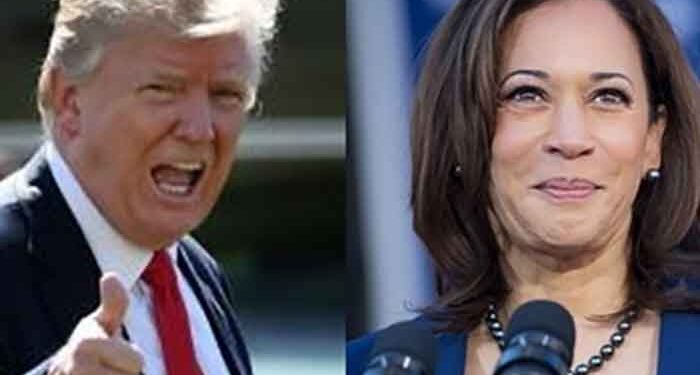Former Vice President Kamala Harris is set to deliver a keynote address at the Emerge 20th Anniversary Gala, marking a significant re-emergence into the political scene.
This major speech comes as Trump approaches a significant milestone – his 100th day in office. The event, scheduled for Wednesday in San Francisco, is expected to draw considerable attention.
In her address, Harris is anticipated to weigh in on Trump’s leadership, providing a critical perspective on his early days in office.
Key Takeaways
- Kamala Harris to deliver keynote address at Emerge 20th Anniversary Gala.
- The speech marks her significant re-entry into the political spotlight.
- Trump’s 100th day in office is a critical milestone.
- Harris’s address is expected to critique Trump’s leadership.
- The event is set to draw significant political attention.
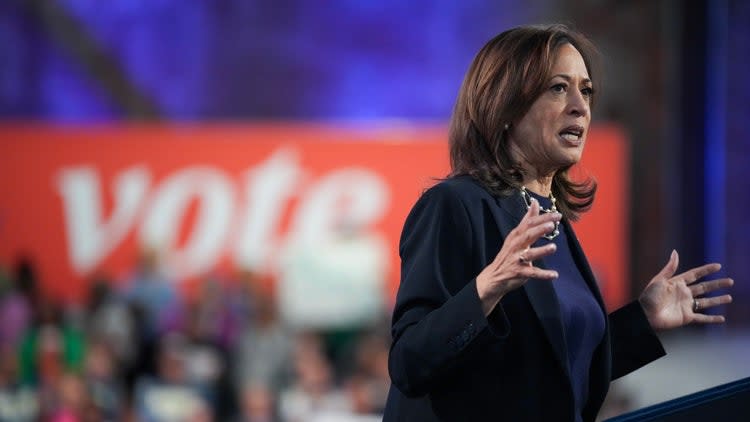
Kamala Harris’s Political Re-emergence After Electoral Defeat
Kamala Harris is once again making headlines with her sharp critique of Trump’s leadership, signaling her return to the political forefront. After a significant electoral defeat, Harris has been weighing her political future, including potential runs for governor of California in 2026 or another presidential bid in 2028.
Context of Harris’s Return to the Political Stage
Harris’s re-emergence comes at a critical time, as she seeks to redefine her role within the Democratic Party. Her return to the political stage is marked by a significant address that has garnered widespread attention. The context of her return is closely tied to her critique of Trump’s policies and leadership style, which has been a hallmark of her political strategy post-election.
Significance of Her First Major Address Since the Election
The significance of Harris’s first major address since the election cannot be overstated. It represents her first major foray back into the national political conversation, setting the tone for her future political endeavors. This speech has been closely watched by both supporters and critics, as it provides insight into her political strategy and potential future directions.
Public Reaction to Her Return
Public reaction to Harris’s return has been mixed, with supporters praising her continued activism and critique of the Trump administration. Critics, on the other hand, have questioned her motives and the timing of her re-emergence. The varied reactions underscore the polarized nature of current American politics.
Harris’s Post-Election Activities
Since the election, Harris has remained active on the political scene, engaging in various activities that have kept her in the public eye. These have included speaking engagements, media appearances, and behind-the-scenes political maneuvering. Her post-election activities have laid the groundwork for her latest address, demonstrating her continued relevance and influence within the Democratic Party.

Setting the Stage: The Timing and Venue of Harris’s Address
As Trump marked his 100th day in office, Kamala Harris seized the opportunity to deliver a major address, critiquing his leadership and presenting an alternative vision. The timing of her speech was strategic, coinciding with a significant milestone in Trump’s presidency.
Strategic Timing Coinciding with Trump’s 100-Day Mark
The decision to schedule Harris’s speech around Trump’s 100-day mark was not coincidental. It was a deliberate choice to capitalize on the media attention and public reflection that comes with such milestones. “This is a moment when the nation is taking stock of the direction our country is heading,” Harris was expected to say, according to sources.
Significance of the Chosen Location
Harris’s speech was held at the Palace Hotel in San Francisco, marking the 20th anniversary gala of Emerge, a training program for female candidates. The venue was significant, not just for its association with women’s empowerment in politics but also for its location in a major city, which facilitated media coverage.
Attendance and Media Coverage
The event drew a considerable crowd, including political activists, former candidates, and media personnel. The media coverage was extensive, with major outlets covering the speech and analyzing its implications for Trump’s presidency.
Event Organization and Atmosphere
The gala was well-organized, with a clear agenda that highlighted Harris’s critique of Trump’s policies. The atmosphere was charged, with attendees showing strong support for Harris’s message. As one attendee noted, “It was inspiring to see Kamala Harris take on the Trump administration so directly.”
The combination of strategic timing, a significant venue, and strong media presence made Harris’s address a pivotal moment in the ongoing political discourse surrounding Trump’s presidency.
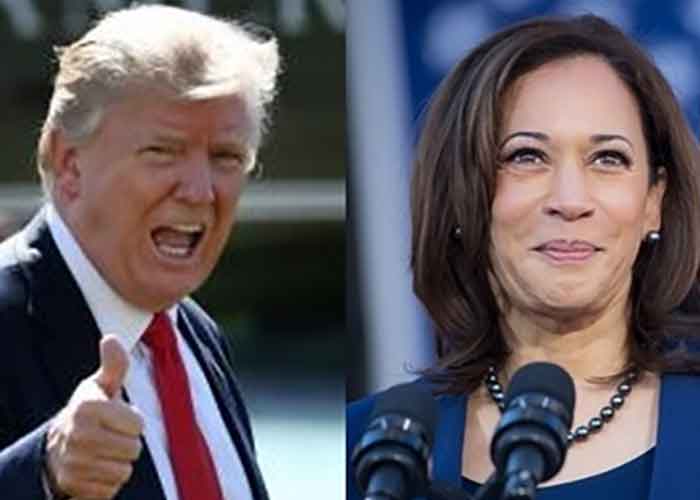
Key Themes and Messaging in Harris’s Speech
In a significant address, Kamala Harris delivered a pointed critique of the Trump administration, highlighting her vision for an alternative leadership. This speech marked a crucial moment in her political re-emergence, as she sought to challenge the current administration’s policies and offer a different direction for the country.
Overview of Central Criticisms
Harris’s speech centered around several key criticisms of the Trump administration. She focused on the administration’s handling of various issues, including economic policies, foreign policy decisions, and domestic issues. Some of the main points of criticism included:
- The administration’s approach to economic inequality
- The handling of foreign policy, particularly in relation to key allies and adversaries
- The impact of domestic policies on marginalized communities
Harris’s Vision for Alternative Leadership
In contrast to the Trump administration’s policies, Harris outlined her vision for a more inclusive and equitable America. She emphasized the need for a government that prioritizes the welfare of all citizens, particularly those who have been marginalized or disadvantaged. Harris’s vision included:
- A commitment to addressing economic inequality through policy reforms
- A more collaborative approach to foreign policy, strengthening alliances and promoting diplomacy
- Domestic policies aimed at protecting and empowering vulnerable communities
Rhetorical Strategies Employed
Harris employed several rhetorical strategies to convey her message effectively. She used repetition to emphasize key points, emotional appeals to connect with her audience, and contrasting narratives to highlight the differences between her vision and the Trump administration’s policies.
The speech included several
memorable quotes and moments
that resonated with the audience. One notable quote was, “We must choose between the path of division and the path of unity,” which encapsulated her call for a more unified and equitable society. Such moments were crucial in making her message more impactful and memorable.
Harris Criticizes Trump’s First 100 Days in Office: Point-by-Point Analysis
In a scathing critique, Kamala Harris dissected the Trump administration’s first 100 days, highlighting significant concerns across various policy domains. Her analysis provided a comprehensive overview of the areas where she believes the Trump administration has fallen short.

Economic Policy Critiques
Harris criticized Trump’s economic policies, citing concerns over the impact on middle-class Americans. She argued that Trump’s tax cuts disproportionately benefited the wealthy, exacerbating income inequality. “The trickle-down economics has failed,” she emphasized, pointing to stagnant wage growth and rising costs of living.
The statistical evidence presented by Harris included data showing a widening wealth gap and a decline in economic mobility. For instance, she cited a report indicating that the top 1% of earners saw a significant increase in their income, while the middle class experienced minimal wage growth.
Statistical Evidence Presented
- A decline in the labor force participation rate
- Increased income inequality as measured by the Gini coefficient
- Stagnant median household income
Foreign Policy Concerns
Harris also raised concerns about Trump’s foreign policy decisions, particularly the withdrawal from international agreements and the impact on global alliances. She stated, “America’s withdrawal from the global stage undermines our credibility and emboldens our adversaries.”
Her critique included a review of the administration’s handling of key international relationships, highlighting potential long-term consequences of these actions.
Fact-Checking Harris’s Claims
While Harris’s criticisms highlight significant concerns, it’s essential to fact-check her claims. For instance, data on the economic impact of Trump’s tax cuts shows mixed results, with some arguing it boosted economic growth, while others point to increased deficits.
Domestic Policy Failures
Harris criticized Trump’s domestic policies, particularly in areas such as healthcare and environmental protection. She argued that the administration’s efforts to dismantle the Affordable Care Act left millions without health insurance.
Her analysis included a review of the administration’s environmental policies, highlighting the potential long-term consequences of rolling back climate change regulations.
In conclusion, Harris’s critique of Trump’s first 100 days in office provided a comprehensive analysis of the administration’s policies and their implications. By examining the statistical evidence and fact-checking her claims, we can better understand the complexities of the issues at hand.
Historical Context: The Tradition of the First 100 Days Assessment
In American politics, the first 100 days of a presidency are more than just a symbolic period; they are a critical test of leadership. This benchmark, which originated with Franklin D. Roosevelt’s New Deal programs, has become a standard for evaluating a president’s initial period in office.
Origin of the 100-Day Benchmark in American Politics
The first 100 days benchmark was first established during Franklin D. Roosevelt’s presidency in 1933. Roosevelt’s swift action to address the Great Depression through his New Deal programs set a new precedent for presidential performance evaluation. As historian Arthur Schlesinger Jr. noted, “Roosevelt’s first 100 days were a period of unprecedented legislative productivity.”
“The New Deal was not just a series of programs; it was a revolution in the role of government in American society.”
Comparing Trump’s First 100 Days to Previous Administrations
Comparing Trump’s first 100 days to those of previous administrations reveals varying approaches to governance. While Roosevelt used this period for significant legislative action, other presidents have utilized it differently. For instance, John F. Kennedy focused on foreign policy initiatives, whereas Barack Obama concentrated on healthcare reform.
Evaluating a president’s first 100 days involves several key metrics, including legislative achievements, executive actions, and public perception. These metrics provide insight into a president’s leadership style and policy priorities.
How Presidents Have Historically Used This Period
Historically, presidents have used their first 100 days to establish their policy agenda and build public support. Some, like Roosevelt, have achieved significant legislative successes, while others have faced challenges in implementing their agenda.
As the political landscape continues to evolve, the first 100 days remain a crucial period for assessing a president’s potential for success. In the context of political commentary 2024, understanding this historical benchmark is essential for analyzing Trump’s presidency and its implications.
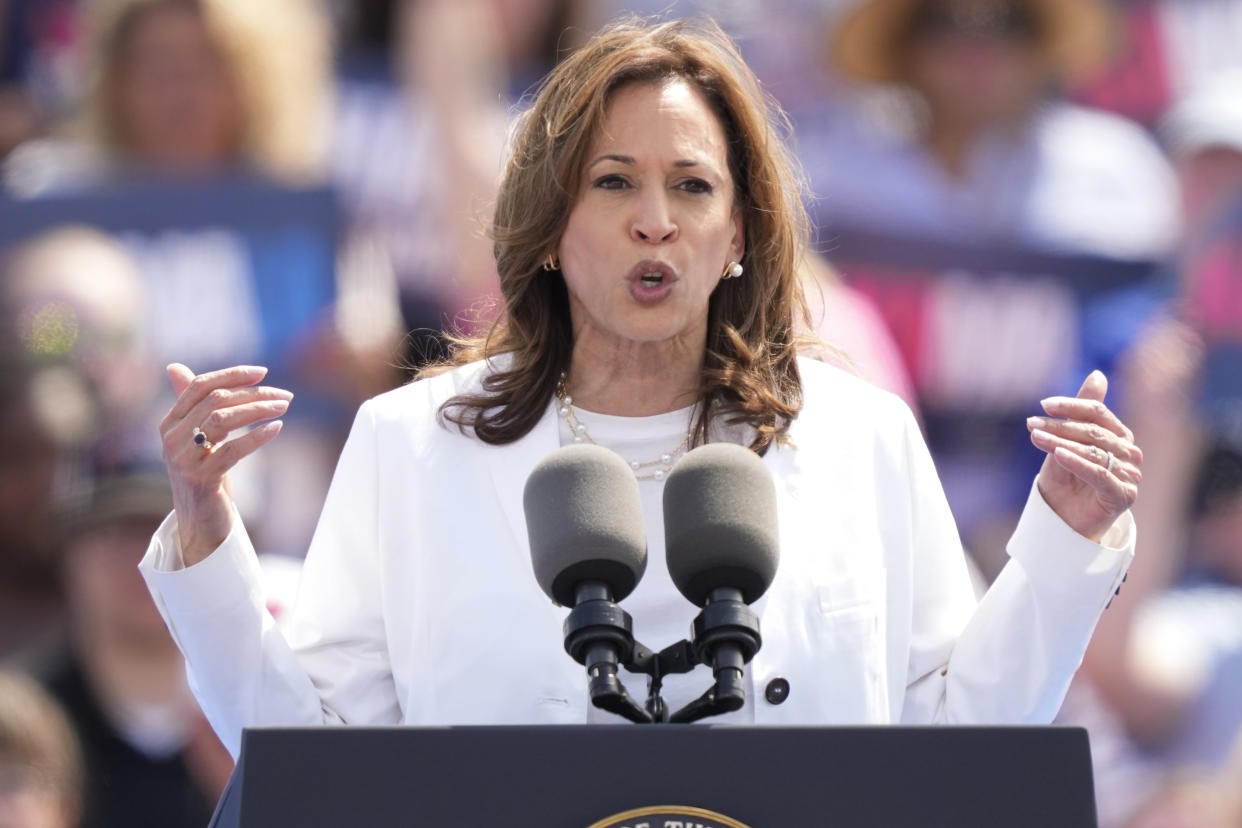
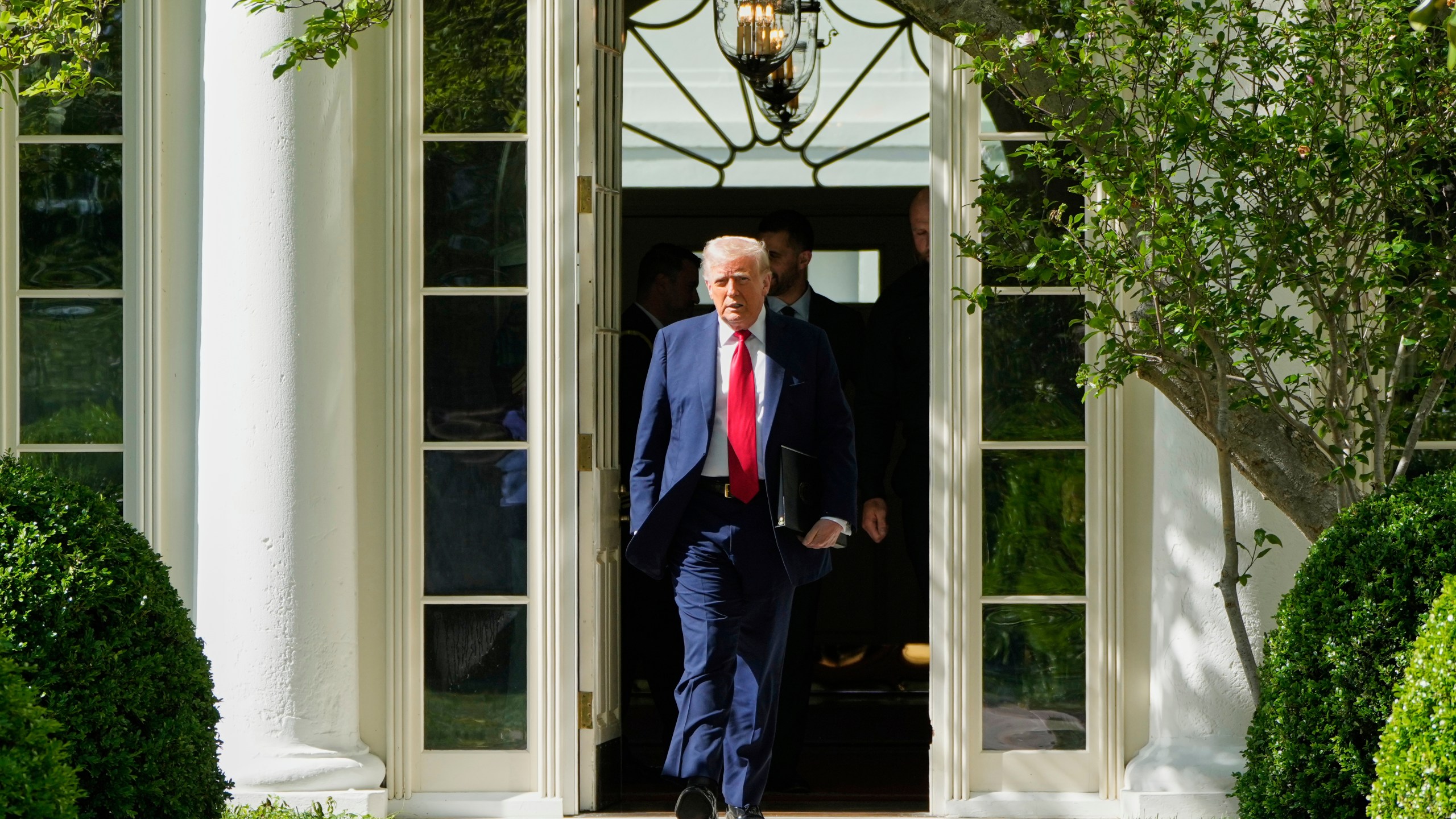
Trump’s Key Policy Implementations in His First 100 Days
In his first 100 days, Trump took bold steps to reshape the American political landscape through his policy initiatives. These actions were closely watched by both supporters and critics, as they set the stage for his presidency.
Executive Orders and Their Impact
Trump issued several significant executive orders during his first 100 days, aiming to fulfill campaign promises and address pressing issues. One of his earliest actions was signing an executive order to withdraw the United States from the Trans-Pacific Partnership (TPP), a move that reflected his commitment to renegotiating trade deals. This step was seen as a significant shift in U.S. trade policy, aligning with his “America First” agenda.
Another key executive order was aimed at dismantling the Affordable Care Act (ACA), commonly known as Obamacare. Trump directed the Department of Health and Human Services to minimize the financial burdens imposed by the ACA, a move that was seen as a crucial step towards repealing and replacing the healthcare law. This action was met with both praise and criticism, as it touched on a highly debated topic in American politics.
Legislative Achievements and Failures
During his first 100 days, Trump’s legislative efforts were focused on passing a comprehensive tax reform bill. The Tax Cuts and Jobs Act, signed into law in December 2017, was a significant legislative achievement, representing a major overhaul of the U.S. tax code. This legislation was hailed as a victory for the Trump administration, as it fulfilled a key campaign promise.
However, not all legislative efforts were successful. Trump’s attempt to repeal and replace Obamacare faced significant opposition and ultimately failed to pass through Congress. This failure was seen as a major setback for the administration, highlighting the challenges of navigating complex healthcare reform.
Cabinet Appointments and Administrative Changes
Trump’s cabinet appointments during his first 100 days were strategic, focusing on individuals who aligned with his policy goals. Notable appointments included Betsy DeVos as Secretary of Education and Scott Pruitt as Administrator of the Environmental Protection Agency (EPA). These appointments signaled Trump’s commitment to reshaping various sectors, from education to environmental regulation.
Campaign Promises: Kept and Broken
Trump’s first 100 days saw a mix of fulfilled and unfulfilled campaign promises. While he successfully issued executive orders related to border security and immigration, other promises, such as repealing Obamacare, remained unfulfilled. The administration faced challenges in keeping pace with the ambitious agenda set forth during the campaign.
Overall, Trump’s first 100 days were marked by significant policy actions that reflected his campaign promises. The impact of these actions continues to be debated, with some viewing them as crucial steps towards change, while others see them as divisive measures.
Democratic Party Strategy: Harris as the Voice of Opposition
As the Democratic Party navigates its post-election landscape, Kamala Harris is emerging as a pivotal voice against Trump’s policies. Her role within the party is becoming increasingly significant as she coordinates with other Democratic leaders to build a unified opposition.
Harris’s Role in the Post-Election Democratic Party
Harris is expected to play a crucial role in shaping the Democratic Party’s response to Trump’s administration. Her experience and visibility make her an ideal candidate to lead the opposition.
Coordination with Other Democratic Leaders
Building a cohesive opposition strategy requires collaboration among top Democratic leaders. Harris is working closely with other prominent figures to ensure a unified message against Trump’s policies.
Building a Unified Opposition Message
A key aspect of the Democratic Party’s strategy is to present a united front against Trump’s agenda. Harris is involved in:
- Crafting a clear, consistent message that resonates with the public.
- Engaging with various factions within the party to ensure broad support.
- Utilizing media platforms to amplify the party’s opposition.
Fundraising and Grassroots Mobilization Efforts
Harris is also playing a vital role in fundraising and mobilizing grassroots support. Her efforts include:
- Organizing fundraising campaigns to support Democratic candidates.
- Mobilizing community support through rallies and public appearances.
- Leveraging social media to reach a wider audience and build momentum.
The Democratic Party’s strategy under Harris’s leadership is focused on creating a robust opposition to Trump’s policies. By building a unified message and mobilizing grassroots support, Harris is set to play a significant role in the party’s efforts.

Republican Response to Harris’s Criticisms
In response to Kamala Harris’s scathing critique, the Republican Party has mounted a vigorous defense. The criticism, which targeted Trump’s leadership during his first 100 days in office, has sparked a significant reaction from the GOP.
Official White House Statements
The White House has issued a statement countering Harris’s claims, emphasizing the accomplishments of Trump’s administration. “President Trump has achieved more in his first 100 days than many presidents achieve in their entire term,” the statement read. The White House has been vocal in defending Trump’s policies, particularly his economic and immigration reforms.
GOP Leadership Reactions
GOP leaders have also rallied around Trump, criticizing Harris’s speech as “partisan politics.” “Kamala Harris’s speech was nothing but a desperate attempt to regain relevance,” said a GOP spokesperson. Several GOP lawmakers took to social media to express their support for Trump and criticize Harris’s stance.
Trump’s Personal Response on Social Media
Trump himself responded to Harris’s criticisms on Twitter, stating,
“Kamala Harris is a total failure. She can’t even get elected properly. Sad!”
Trump’s tweet was widely retweeted by his supporters, who praised his strong stance against Harris.
Conservative Media Coverage and Commentary
Conservative media outlets have also weighed in on the debate, with many criticizing Harris’s speech as “divisive” and “lacking substance.” Fox News aired several segments discussing Harris’s criticisms, with commentators arguing that her claims were unfounded and politically motivated.
The Republican response to Kamala Harris’s criticisms highlights the deep political divisions in the US. As the political landscape continues to evolve, it remains to be seen how these exchanges will impact public opinion and the upcoming midterm elections.
Media Coverage and Public Reception of the Speech
As Kamala Harris delivered her speech, the media was quick to dissect her remarks, providing extensive coverage of her criticisms. The speech was a significant event, marking a crucial moment in the political landscape as it coincided with the 100-day mark of Trump’s presidency.
Mainstream Media Analysis and Headlines
Mainstream media outlets provided comprehensive coverage of Harris’s speech, with many dedicating prime segments to analyzing her criticisms of Trump’s policies. Headlines highlighted her sharp critiques, framing the event as a significant political statement. For instance, major news networks ran segments titled “Harris Slams Trump’s First 100 Days” and “Kamala Harris Delivers Scathing Critique of Trump Administration.”
The analysis often focused on the potential impact of Harris’s speech on the Democratic Party’s strategy and the midterm elections. Experts weighed in on the implications of her criticisms, discussing how they might influence public opinion and the political discourse.
Social Media Reaction and Trending Topics
Social media platforms were abuzz with reactions to Harris’s speech, as users across the political spectrum shared their views. Hashtags related to the speech trended on Twitter, with many users praising Harris’s courage and criticizing Trump’s policies. On Facebook and other platforms, the speech was widely shared, with many posts expressing support for Harris’s stance.
Polling data released in the days following the speech indicated a mixed public response. While some polls showed a significant portion of the public supported Harris’s criticisms, others indicated that a substantial segment remained unconvinced. The polling highlighted the polarized nature of the American public’s response to political speeches and criticisms.
International Media Coverage
The international media also covered Harris’s speech, with outlets around the world reporting on her criticisms of Trump’s administration. Global news agencies like BBC and Reuters provided detailed coverage, framing the speech within the context of American politics and its potential global implications.
The coverage often analyzed the potential effects of Harris’s criticisms on Trump’s presidency and the broader political landscape in the United States. This international attention underscored the global interest in American political developments and their potential impact on international relations.
Political Implications of Kamala Harris’s Speech on Trump 100 Days in Office
The political implications of Kamala Harris’s speech on Trump’s 100-day milestone are multifaceted and far-reaching. As a prominent figure in the Democratic Party, Harris’s critique of Trump’s first 100 days in office has significant ramifications for the political landscape.
Impact on Democratic Party Positioning
Harris’s speech has reinvigorated the Democratic Party’s opposition to Trump, providing a clear and unified voice against the current administration’s policies. By critiquing Trump’s economic, foreign, and domestic policies, Harris has solidified her position as a leader within the party. This newfound momentum could potentially reshape the party’s strategy heading into the midterm elections.
The Democratic Party’s response to Harris’s speech indicates a shift towards a more aggressive opposition strategy. Party leaders are likely to leverage Harris’s critique as a foundation for their campaigns, focusing on the contrast between their vision and Trump’s record.
Influence on Midterm Election Strategies
Harris’s address is expected to influence midterm election strategies by galvanizing Democratic voters and potentially swaying independents. The speech’s emphasis on Trump’s policy failures could become a central theme in Democratic campaigns nationwide.
Moreover, Harris’s critique may encourage Democratic candidates to adopt a more confrontational stance against the Trump administration, potentially leading to a more polarized election season.

Potential Effects on Trump Administration Policies
The Trump administration may adjust its policy trajectory in response to Harris’s criticisms, potentially moderating certain policies to appeal to a broader audience. However, it’s also possible that the administration will double down on its current policies, using Harris’s speech as a rallying cry for its base.
Shifting Political Alliances and Coalitions
Harris’s speech could lead to shifting political alliances, as various factions within the Democratic Party respond to her critique. The potential for new coalitions forming in response to Trump’s policies is significant, and Harris’s leadership could play a crucial role in shaping these alliances.
Furthermore, the speech may impact the broader political discourse, influencing how different political groups position themselves in relation to the Trump administration.
Harris’s Future Political Role: Analysis and Speculation
With her recent speech marking Trump’s 100 days in office, Kamala Harris has reignited discussions about her potential next steps in the political arena. As a prominent figure in the Democratic Party, Harris’s actions and words are closely watched, and speculation about her future is rampant.
Potential Leadership Positions Within the Democratic Party
Harris is considered a potential candidate for significant leadership roles within the Democratic Party. Her recent speech has bolstered her profile as a strong critic of the Trump administration, potentially positioning her for a leadership role in the party.
- Party Chair: Harris could be a contender for the Democratic National Committee chair position, leveraging her national profile and political savvy.
- Senate Leadership: Although currently not in the Senate, her experience as Attorney General and Senator-elect could position her for future Senate leadership roles.
Prospects for Future Electoral Campaigns
Speculation about Harris’s future electoral campaigns is also a topic of interest. There are discussions about her potentially running for governor of California in 2026 or another presidential bid in 2028.
Potential Gubernatorial Run: Harris has been mentioned as a potential candidate for governor of California, a move that could keep her in the political spotlight while potentially preparing her for another national run.
Expert Opinions on Harris’s Political Future
Political analysts are divided on Harris’s future prospects. Some see her as a rising star in the Democratic Party, while others caution that her path forward is fraught with challenges.
“Kamala Harris has the potential to be a major force in the Democratic Party, but she needs to navigate the complex landscape carefully.” –
Political Analyst, CNN
Harris’s Own Hints About Her Next Steps
Harris has been cautious about revealing her next steps, but there have been hints at her continued involvement in high-level politics.
“The work we’re doing now is laying the groundwork for the future,” Harris has said, leaving the door open to various possibilities.
The speculation surrounding Kamala Harris’s future is a testament to her influence and the high stakes of the current political climate. As the political landscape continues to evolve, Harris’s next moves will be closely watched by both supporters and critics.
Broader Implications for American Political Discourse
As Kamala Harris re-emerges on the political scene, her criticism of Trump’s tenure has brought the issue of political polarization to the forefront. The implications of her speech extend beyond a simple critique of the current administration, touching on the very fabric of American political discourse.
Polarization in Post-Election America
The political landscape in the United States has become increasingly polarized, with Harris’s speech being a significant indicator of this trend. The divide between the Democratic and Republican parties has grown wider, with each side firmly entrenched in their positions. Harris’s critique of Trump’s first 100 days in office is not just a reflection of Democratic dissatisfaction but also a signal of the intensifying political warfare that characterizes the current American political scene.
The polarization is not limited to policy differences but has seeped into the cultural and social fabric of the nation. As a result, political discourse has become more heated, with figures like Harris playing a crucial role in shaping the narrative against the current administration.
The Role of Former Administration Officials as Critics
Harris’s role as a critic of the Trump administration is significant, given her background as a former senator and her current position as a leading figure in the Democratic Party. Her critique is not just a personal opinion but carries weight due to her experience and understanding of the political system.
Impact on Political Norms and Traditions
The criticism from former administration officials like Harris challenges traditional norms of political behavior. It signifies a shift towards a more confrontational approach, where former officials are not hesitant to speak out against their successors. This change could potentially alter the dynamics of political discourse, making it more adversarial.

Changing Dynamics Between Former and Current Administrations
The dynamic between former and current administrations is evolving, with former officials increasingly taking on the role of critics. This shift reflects a broader trend where the lines between opposition and critique are becoming blurred. Harris’s actions are part of this trend, contributing to a more vibrant but also more contentious political environment.
In conclusion, Harris’s speech and her continued activism reflect the broader implications for American political discourse, including increased polarization and the evolving role of former administration officials as critics. These trends are likely to shape the political landscape in the years to come.
Conclusion: The Significance of Harris’s Critique in the American Political Landscape
Kamala Harris’s speech criticizing Trump’s leadership marks a significant moment in the ongoing political discourse, reflecting the Democratic Party’s response to his presidency. As the Democratic Party continues to navigate its role in the post-election landscape, Harris’s address serves as a pivotal moment in shaping the party’s stance on key issues.
The latest updates in US politics indicate a deepening divide between the Democratic and Republican parties. Harris’s critique of Trump’s first 100 days in office highlights the Democratic Party’s commitment to challenging the Trump administration’s policies and actions. This critique is crucial in informing the democratic response to Trump and setting the stage for future political engagements.
As the political landscape continues to evolve, Harris’s re-emergence as a critic of the Trump administration underscores the importance of robust opposition in American democracy. Her speech is a call to action, galvanizing support for the Democratic Party’s agenda and reinforcing the party’s commitment to holding the Trump administration accountable.
FAQ
What was the main focus of Kamala Harris’s speech criticizing Trump’s leadership?
The main focus of Kamala Harris’s speech was to criticize Trump’s policies and leadership during his first 100 days in office, presenting her vision for alternative leadership and highlighting the failures of the Trump administration.
Why is Kamala Harris’s re-emergence into the political scene significant?
Kamala Harris’s re-emergence is significant because it marks her return to the political stage after her electoral defeat, and her continued involvement in politics has implications for the Democratic Party’s positioning and midterm election strategies.
What was the strategic timing of Harris’s speech, and why was it significant?
Harris’s speech coincided with Trump’s 100-day milestone, making it a strategic move to draw attention to her criticisms of the Trump administration and provide a counter-narrative to the Republican agenda.
How did the media react to Harris’s speech, and what was the public reception like?
The media coverage of Harris’s speech was extensive, with mainstream media analysis and headlines highlighting her criticisms of Trump, and social media reaction was mixed, with trending topics and hashtags emerging in response to her speech.
What were the key criticisms presented by Harris in her speech?
Harris criticized Trump’s economic, foreign, and domestic policies, presenting statistical evidence to support her claims and highlighting the failures of the Trump administration in these areas.
How did the Republican Party respond to Harris’s criticisms?
The Republican Party responded to Harris’s criticisms through official White House statements, GOP leadership reactions, and Trump’s personal responses on social media, with conservative media coverage and commentary also reacting to her speech.
What are the potential implications of Harris’s speech for the Democratic Party?
Harris’s speech has implications for the Democratic Party’s positioning, influence on midterm election strategies, and potential effects on Trump administration policies, with the potential to shift political alliances and coalitions.
What is the significance of the first 100 days benchmark in American politics?
The first 100 days benchmark is a significant metric used to evaluate presidential performance, with Trump’s performance compared to that of previous administrations, and Harris’s criticisms highlighting the failures of his early presidency.
What are the prospects for Kamala Harris’s future political role?
Harris’s future political role is subject to speculation, with potential leadership positions within the Democratic Party and prospects for future electoral campaigns, and expert opinions and her own hints providing insights into her potential trajectory.
How does Harris’s speech relate to the broader implications for American political discourse?
Harris’s speech contributes to the ongoing polarization in post-election America, highlighting the role of former administration officials as critics, and impacting political norms and traditions, as well as the changing dynamics between former and current administrations.
































